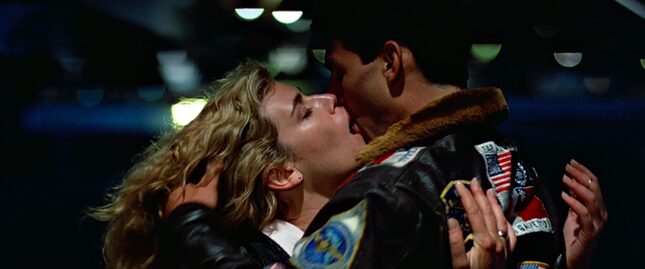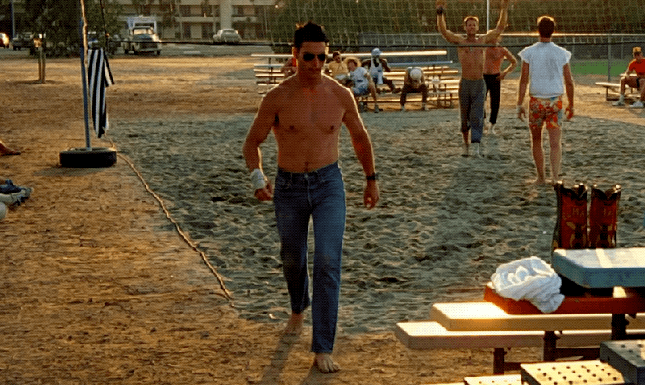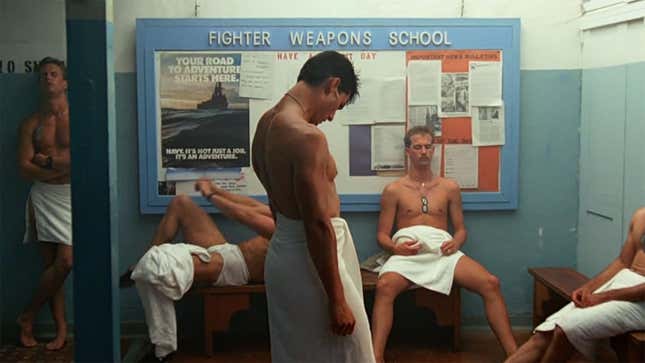

Since the dawn of time, or 1986 (close enough), people have given Tony Scott’s Top Gun the kind of fluttery side eye that Kelly McGillis gives Tom Cruise in one of the movie’s scenes that takes place in an elevator. Is it or isn’t it… ?
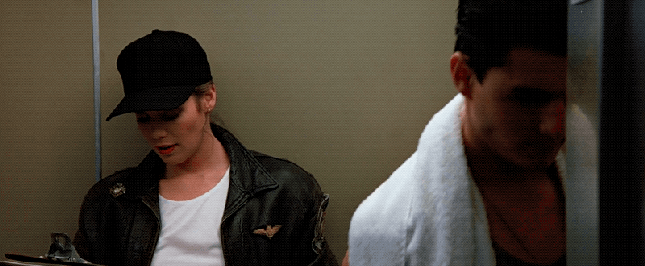
You know…
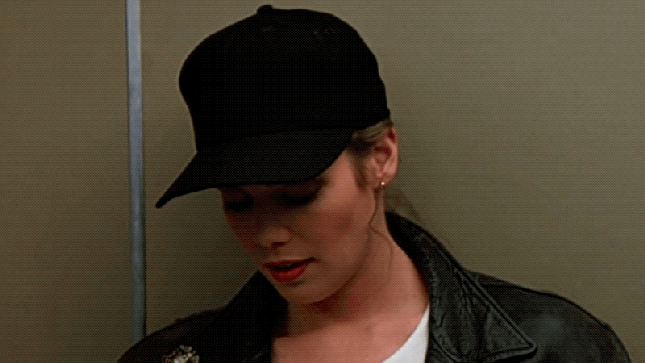
Top Gun, in my experience, is synonymous with its perceived gayness. There are countless pieces probing just how homosexual its depiction of a (mostly) homosocial world of naval aviators is. Such discourse was observable from the beginning, too: Pauline Kael’s review of the film that ran in the June 16, 1986, issue of The New Yorker, about a month after the blockbuster’s release, observed that when McGillis, Cruise’s love interest, is offscreen “the movie is a shiny homoerotic commercial: the pilots strut around the locker room, towels hanging precariously from their waists. It’s as if masculinity had been redefined as how a young man looks with his clothes half off, and as if narcissism is what being a warrior is all about.” (I’m actually at a loss for a conception of masculinity that doesn’t incorporate how a young man looks with his clothes half off. Maybe Kael was off the mark here, or I’m just a product of a world that Top Gun helped create.) The following year, Frank Rich wrote in Esquire that Top Gun was:
a jingoistic film about bomber pilots in which the men (led by Tom Cruise) looked like Bruce Weber models and dressed accordingly, whether in the locker room or on the volleyball court. Even the heroine (Kelly McGillis) wore flyboy attire, though that did not deter the hero from sharing the film’s climactic embrace with a fellow pilot, the impeccably Aryan-looking Val Kilmer.
Perhaps the most famous, and certainly most passionate argument for reading Top Gun as an explicitly gay text is Quentin Tarantino’s monologue in Rory Kelly’s 1994 film Sleep With Me, an apparently improvised (and entirely Tarantinoian) bit in which Top Gun is defined as “a story about a man’s struggle with his own homosexuality”:
This sort of postmodern reading was particularly hip in the ’90s (especially in Tarantino’s work—see the multi-character “Like a Virgin” analysis in Reservoir Dogs), although it is certainly heterocentric and, while jokingly so, predicated on the notion of gay recruitment (Kilmer’s Ice Man, the film’s de facto antagonist, leading a crew representing gay men who are telling Cruise’s Maverick, “Go, go the gay way”). The perpetuation of a right-wing fallacy taints Tarantino’s interpretation, rendering it impractical and not nearly as clever as he seems to think. He tried, though!On Nexis, the search results for “‘Top Gun’ and gay,” suggest that this discourse only grew in the years after the film’s release.

It’s not entirely unfounded. In the commentary on the physical releases of Top Gun, director Tony Scott says he found inspiration in a book of black and white photographs by gay photographer Bruce Weber. Scott was taken by the haircuts and style of Weber’s models, as well as the “intent of their eyes,” and showed the book to Paramount execs to give them an indication of his aspired aesthetic. “Everyone was scared because it was infamous in terms of the gay community, this book,” said Scott, who died in 2012. “That’s where all these haircuts came from and this hard-edged military look”
On the film’s infamous volleyball scene, featuring a bunch of half-naked boys playing (while Kenny Loggins’s “Playing With the Boys” blares), Scott said:
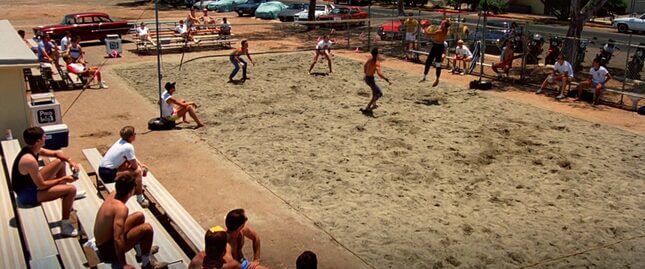
“This was the scene I struggled with the most, but in the end, it just became hunky bodies and California sun, but it became a favorite with the women as well as the… as well as the guys. Especially, the San Francisco guys.”
-

-

-

-

-

-

-

-

-

-

-

-

-

-

-

-

-

-

-

-

-

-

-

-

-

-

-

-

-

-

-

-

-

-

-

-

-

-

-

-


